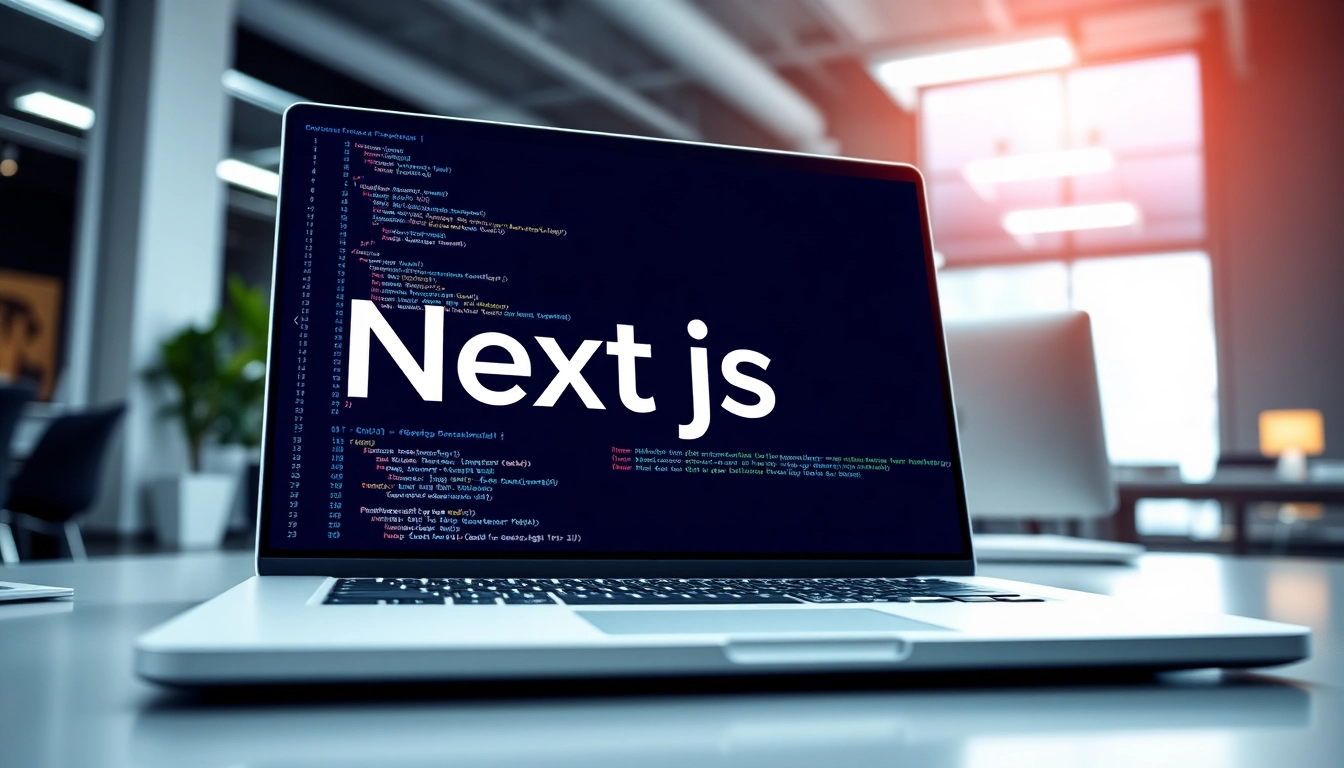Understanding Next.js: Core Concepts and Benefits
In the rapidly evolving landscape of web development, staying ahead requires mastering modern frameworks that address performance, scalability, and SEO challenges. Among these, Next.js has emerged as a leading solution for building high-quality React-based web applications. Developed by Vercel, Next.js simplifies complex development workflows, enabling developers to craft fast, scalable, and SEO-friendly websites with ease. This article delves into the core concepts of Next.js, its distinctive features, implementation strategies, and how it can elevate your web projects beyond traditional methods.
What is Next.js and How It Enhances React Development
Next.js is an open-source framework built on top of React, designed to extend its capabilities and streamline the development of production-ready web applications. While React provides the foundation for building user interfaces through components, Next.js introduces additional features like server-side rendering (SSR), static site generation (SSG), and automatic routing—addressing many challenges faced in large-scale applications.
One of the key advantages is its ability to unify client and server rendering, allowing developers to deliver content that is pre-rendered on the server and hydrated on the client. This approach significantly improves performance and SEO, ensuring websites are fast and easily discoverable by search engines. Additionally, Next.js offers an intuitive development experience, with zero-config setups, file-based routing, and built-in API routes, making it an ideal choice for both startups and enterprise-level projects alike.
Key Features: Server-Side Rendering and Static Site Generation
Server-Side Rendering (SSR)
SSR enables Next.js to generate HTML pages on the server at request time, delivering pre-rendered pages directly to users’ browsers. This results in faster initial load times and enhances SEO because search engines can crawl fully rendered content without executing JavaScript. For dynamic websites that rely on real-time data, SSR ensures that content remains fresh and relevant.
Static Site Generation (SSG)
Next.js also supports static site generation, where pages are pre-rendered at build time. This process produces highly performant static pages suitable for content-rich sites, blogs, or documentation. SSG is ideal for content that doesn’t change frequently, enabling rapid deployment and exceptional scalability.
These features are complemented by hybrid approaches, allowing developers to choose the best rendering method per page or component, optimizing for performance and user experience.
Why Choose Next.js Over Other Frameworks for Your Projects
Choosing the right framework can significantly influence project success. Next.js stands out due to its comprehensive feature set, ease of use, and performance benefits. Compared to traditional React applications, Next.js reduces boilerplate code through its automatic routing and serverless functions support, accelerating development cycles.
Moreover, its built-in performance optimization tools, such as automatic code splitting, optimized images, and incremental static regeneration, ensure your application remains fast even as it scales. The framework’s strong emphasis on SEO, coupled with support for custom head tags and server-rendered content, makes it an attractive choice for commercial websites aiming for higher search rankings.
Furthermore, Next.js community and ecosystem are thriving, providing extensive documentation, tutorials, and third-party plugins, which streamline development and foster innovation.
Implementing Next.js in Real-World Projects
Setup and Configuration for Optimal Performance
Starting with Next.js is straightforward. Initiate your project using npm or yarn commands like npx create-next-app my-project, which sets up a boilerplate with sensible default configurations. For optimization, consider customizing your next.config.js to fine-tune performance parameters, such as image optimization, cache strategies, and environment variables.
Leverage built-in API routes to develop backend functionalities without maintaining separate servers, simplifying deployment workflows. Integrate Continuous Integration/Continuous Deployment (CI/CD) pipelines to automate builds, testing, and hosting—especially when deploying on Vercel, the native platform for Next.js, which optimizes serverless functions and CDN delivery.
Best Practices for Building Scalable Applications
Design your application with modular architecture in mind—organize components, pages, and API routes logically. Use dynamic imports and code splitting to ensure minimal load times. Implement state management solutions like Redux or React Context to handle complex user interactions efficiently. Optimize images with Next.js’ Image component and implement lazy loading where appropriate.
Prioritize accessibility and responsive design to ensure your site is usable across devices and for all users. Lastly, monitor performance using tools like Lighthouse and Next.js analytics to identify and fix bottlenecks proactively.
Common Challenges and How to Overcome Them
Despite its strengths, developers may encounter issues such as increased build times for large projects, complex routing setups, or integrating third-party services. To mitigate these, utilize Incremental Static Regeneration for large datasets, adopt dynamic routing patterns, and carefully select compatible plugins or middleware.
Regularly update dependencies and stay informed about Next.js releases—many challenges are addressed with new features and optimizations in subsequent versions.
Optimizing SEO and User Experience with Next.js
Leveraging Built-in SEO Features
Next.js simplifies SEO optimization by providing easy control over the document head through the next/head component, enabling custom meta tags, sitemaps, and structured data. Pre-rendered HTML ensures that search engines can easily index content, resulting in better search rankings.
Speed and Performance Tuning Tips
Performance boosts can be achieved through automatic code splitting, prefetching links, and optimized images. Use Next.js’ Image component with built-in lazy loading to reduce load times. Enable caching headers and leverage a Content Delivery Network (CDN) to deliver content swiftly worldwide.
Case Studies: Successful Next.js Deployments
Companies like Netflix, TikTok, and Hulu have adopted Next.js for their web interfaces, citing rapid load times, excellent SEO performance, and scalable infrastructure. These deployments demonstrate Next.js’ ability to handle high traffic and complex data interactions, delivering seamless user experiences.
Advanced Next.js Techniques and Future Trends
Integrating APIs and Serverless Functions
Next.js enables seamless API integration through its API routes, allowing backend logic to reside within the same codebase. This facilitates cloud functions, serverless deployments, and microservices architectures, reducing latency and simplifying maintenance.
Emerging Features in Next.js Releases
The Next.js development team continuously introduces features like Middleware, Edge Functions, and improved Image Optimization. Staying updated on these developments ensures your applications leverage cutting-edge performance and security enhancements.
Preparing for Next.js 20 and Beyond
The future development roadmap hints at even tighter integrations with emerging technologies like WebAssembly, enhanced data fetching methods, and AI-driven optimizations. Preparing for these changes involves adopting modular architecture, improving developer tooling, and fostering community engagement.
Resources and Community Support for Next.js Developers
Top Learning Platforms and Documentation
Start your Next.js journey with the official documentation at nextjs.org/docs. Platforms like Udemy, Coursera, and freeCodeCamp offer comprehensive tutorials and courses to accelerate your learning curve, covering everything from basics to advanced topics.
Joining the Next.js Developer Community
Engage with the vibrant community via forums, GitHub repositories, Reddit, and Discord channels. Participating in discussions helps troubleshoot challenges, learn best practices, and stay informed of the latest trends and updates.
Contributing to the Ecosystem
Developers can contribute by creating plugins, writing tutorials, or improving core features through open-source collaboration. Such contributions enrich the ecosystem, foster innovation, and enhance the framework’s robustness for everyone.













